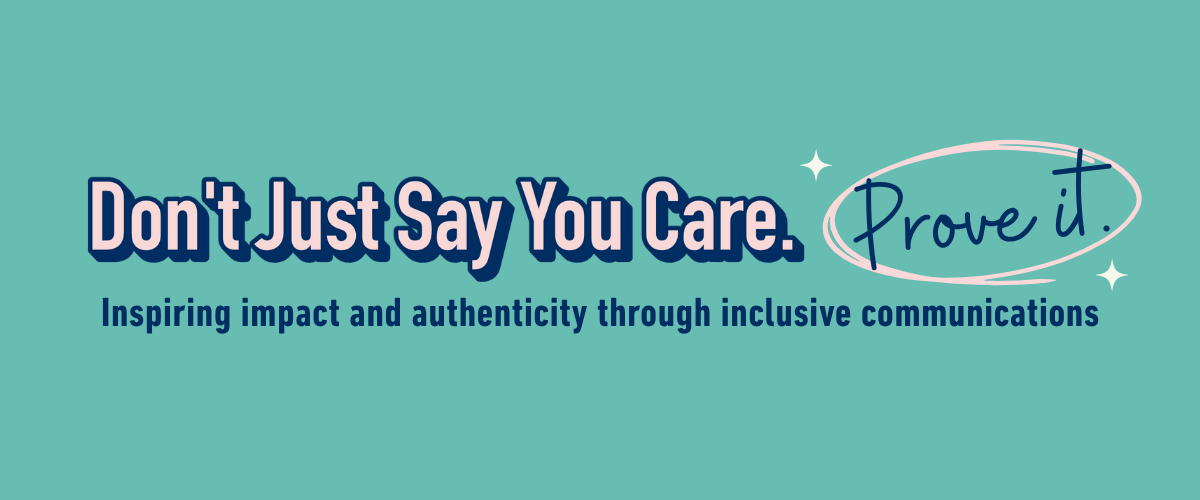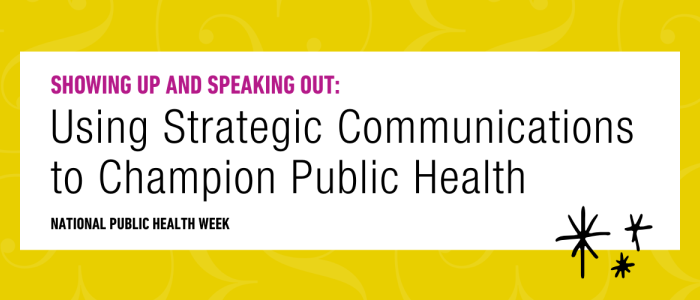
Don’t Just Say You Care. Prove It: Inspiring impact and authenticity through inclusive communications.
By: Rachel Dauer
Jun 10, 2025
Category: P&G culture
Let’s be clear: being an inclusive brand in 2025 is not about checking boxes. It isn’t slapping a rainbow over your logo in June or running a stock photo of a “diverse” team on your website’s homepage. It’s about being unflinching in your beliefs and being bold enough to act on them. Every. Single. Day.
At Piper & Gold, inclusivity is not a marketing trend; it’s a moral obligation. Being inclusive is vital to creating authentic relationships, dismantling barriers and ensuring every voice plays a part in the collective conversation that inspires change.
Still, we see every day that organizations are under attack for simply using the word “inclusion.” Being public about your beliefs can be terrifying, and it feels like you’re painting a bullseye on your back for persecution. But that only reinforces why this work matters.
Our perceptions of what’s “neutral” or “appropriate” have been shaped by biases, stigma and exclusion of certain perspectives. To create inclusive messages (aka messages that welcome people in, honor their humanity and accurately represent the world we live in), communications professionals should be asking themselves: Whose voice is this message representing, and who is it leaving out?
So, how can you incorporate more inclusive communication practices to inspire change?
Humanize Storytelling: Asset Framing vs. Deficit Framing
We’ve heard it said before: “I just can’t watch the news anymore. It’s all bad news, all the time.”
Our take? If your brand tells stories and all we see are hardships…you’re doing a disservice. Deficit framing is an approach that focuses on what a person, group or community lacks, rather than what they bring to the table. Oftentimes, it is used as a tactic to spark fear in readers or fuel the spread of harmful, inaccurate narratives.
If you want to remain inclusive, you’ve got to flip the narrative. By incorporating asset framing, or defining people by their contributions and strengths before their challenges, we are able to honor their wholeness and stop using their trauma as a clickbait tactic.
Can you spot the difference between these examples?
- Sarah is a happy, almost-toddler who is always on the go. She loves swimming, making people laugh and playing with her family’s cat. But when Sarah was born, her future was not so certain.
- Sarah and Beth were born 10 weeks early and were fading fast. The hospital was able to save Sarah, but Beth passed before her first 24 hours on earth.
Use Imagery that Reflects and Connects
We live in a visual world, and the images you display communicate your values before a single word is read. Your photos need to look like your audience and feel like real life.
Use local, community-sourced photography whenever possible. Show people as they are in moments of joy, power and inspiration. Don’t just document their struggles. Celebrate what makes them unique.
And make no mistake, inclusive imagery isn’t just about who’s in the frame. It’s also about how that frame is built. Use accessible, high-contrast, ADA-compliant color palettes. Stick to fonts and sizes that everyone can read across digital and print media.
If your brand claims to “represent your community,” your visuals better reflect that — in people, in design and in intention.
Words Have Power: How Will You Use Yours?
Language doesn’t just define our world — it shapes it. A single word can liberate, dehumanize or stop us in our tracks. That’s the power we hold every time we write, publish or speak.
Being intentional with our words isn’t just about avoiding harm — it’s about activating change. The right language can shift perceptions, challenge stereotypes and create more accurate stories. To remain inclusive, you must listen to your audience and speak in ways that honor their identity and respect their humanity.
Instead of saying: You could say:
Convict or felon Incarcerated person
Recovering drug addict Former substance user
At-risk youth Young people navigating systemic barriers
Why it matters
The words in the left column reduce someone to a label defined solely by their past or environment, stripping away their full humanity and potential for change. Inclusive language acknowledges the individual first, emphasizing their current situation without permanently defining them by it, opening the door for empathy and rehabilitation, rather than stigma and exclusion.
Examples in action:
"That felon will never be able to find a job because of their past." (Pessimistic, sparks fear in readers and limits the individual to a fixed box where they can never change.)
"That incarcerated person deserves a fair chance to rebuild their life after serving time." (Encouraging, future-focused and highlights opportunities instead of limitations.)
Ask the Hard Question: Is Their … Relevant?
Race. Gender. Religion. Weight. Citizenship. Disability status.
When we write or speak about someone, we must ask: Is this detail relevant to the story, or is it just reinforcing bias?
People are more important than publicity or positive public perception. If their race isn't essential context, don’t include it. If their body size isn’t part of the point, leave it out. While it’s important to give diverse perspectives, it’s essential to ensure identity is being used to deepen the audience’s understanding, not to emphasize a stereotype.
Don’t confuse transparency with entitlement. You are not entitled to share every detail of someone’s identity or personal story because it will make your brand look more inclusive, especially when you’re not the one who will experience the consequences of that disclosure.
If You’re Not Willing to Reflect, You’re Not Ready to Communicate Inclusively
Being an inclusive brand in 2025 isn’t easy. It requires intention, reflection and the willingness to challenge oppressive and outdated systems. It’s encouraging your organization, and everyone in it, to push past fear and develop communications that drive authentic, lasting change. It’s recognizing that remaining stagnant in your practices does not mean you're being neutral; it’s saying you're compliant with the exclusion of valuable perspectives.
Inclusion isn’t a one-time statement or a campaign moment — it’s a continual process of learning, unlearning and building new approaches. A representative society is not created by brands that wait for permission to change the injustices they see. It belongs to those who lead the charge in challenging bias, building trust and ensuring all voices are heard.
---
Join us in our commitment to communicate with more care, compassion and inclusivity. Sign up for our mailing list and access practical tools and actionable tips to support your marketing efforts: https://www.piperandgold.com/connect-with-us




